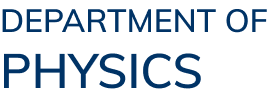Abstract
The ultracold atom system serves as an exceptional and highly controllable platform for investigating topological matter induced by spin-orbit coupling. The realization of spinorbit coupling in both continuum and higher dimensional optical lattices has already been achieved in ultracold atom systems. Recent advancements in the field have expanded the horizons of ultracold atom research by incorporating dissipation, leading to the exploration of non-Hermitian physics.
The first part of this thesis focuses on the realization of a two-dimensional non-Hermitian topological band for ultracold fermions in spin-orbit-coupled optical lattices with tunable dissipation. Through experimental examinations of the spectral topology in the complex eigenenergy plane, we provide evidence for the existence of the skin effect—a distinct feature characterized by pronounced nonzero spectral winding when dissipation is introduced to the system. In this system, we also demonstrate the creation of exceptional points (EPs) in momentum space, forming a pair connected by an open-ended bulk Fermi arc, which stands in contrast to the closed loops observed in Hermitian systems. Remarkably, these EPs dynamically shift as the level of dissipation increases, ultimately resulting in the formation of the Fermi arc. Our work not only sets the stage for further investigations into simulating non-Hermitian physics in higher dimensions but also paves the way for a deeper understanding of the interplay between quantum statistics and the non-Hermitian skin effect.
The second part of this thesis introduces two applications of machine learning techniques in quantum gas experiments. In the first application, we propose a heuristic approach that utilizes machine learning analysis to classify SU(N) Fermi gases based on their time-of-flight density distributions. This framework showcases the ability of neural networks to effectively combine features from high momentum signals and density fluctuations, enabling the accurate discrimination of different SU(N) fermions. In the second application, we present successful identification of topological phase transitions achieved through the utilization of a deep convolutional neural network trained with experimental data obtained from a symmetry-protected topological system of spin orbit-coupled fermions.
